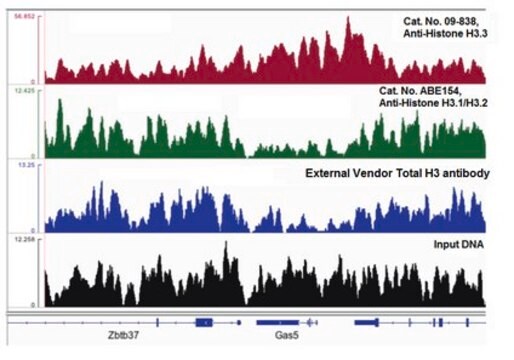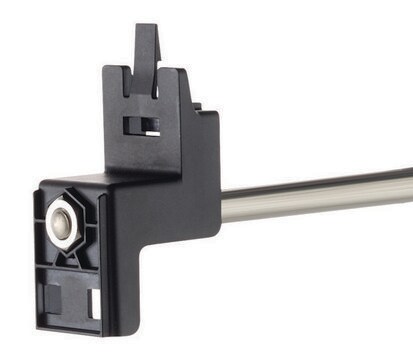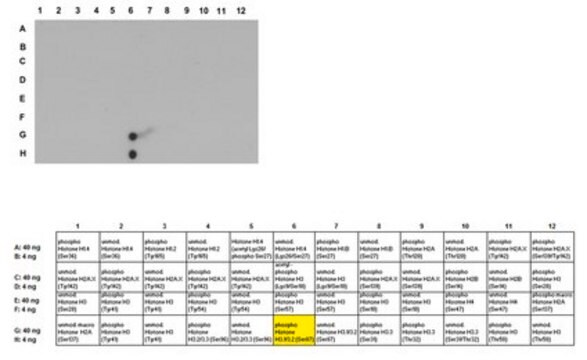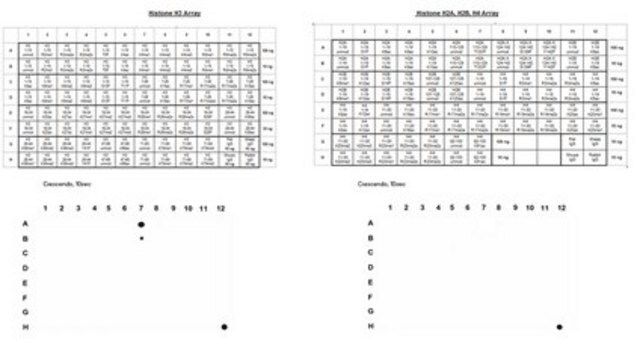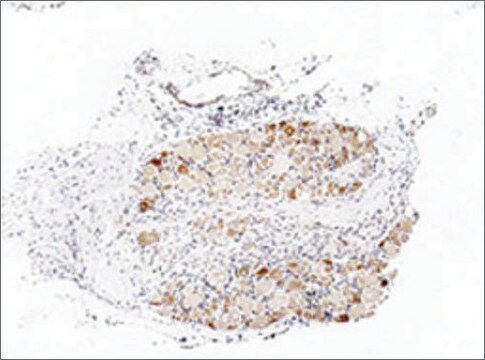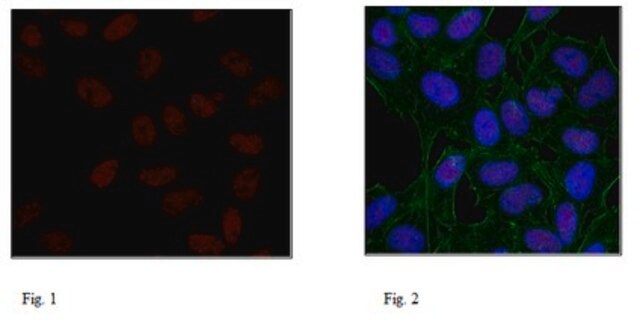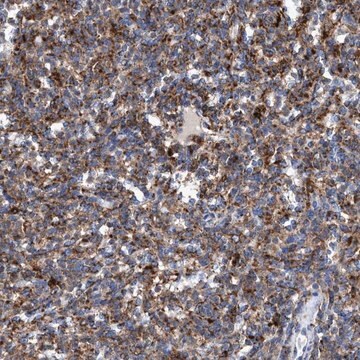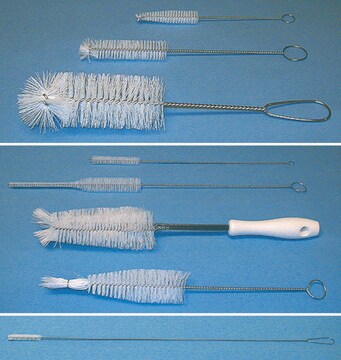詳細
Histones are nuclear proteins that form octameric structures, which bind DNA to form units of chromatin called nucleosomes. The family of histones H1, H2A, H2B, H3, and H4 are key players in gene regulation. Histones undergo a number of post-translational modifications (PTMs) in response to various stimuli including phosphorylation on serine and threonine residues and methylation on lysine residues. PTMs produce configural changes in histone proteins that may induce nucleosome remodeling and expose or hide DNA sequences from transcriptional complexes, depending on the cellular context. Often, it is the pattern of different modifications on several histone residues that alter chromatin, rather than modification of single residues. Histone H3 is observed to form the core octameric structure that is required for the packaging of DNA into nucleosomes, the most basic level of chromatin arrangement. H1.4 is one of four variants of Histone H1 (H1.2-H1.5) that can be found in somatic cells. The H1 Histones may function as linker proteins binding DNA via their GH domain, and enabling the wrapping of DNA around the core nucleosomal structure formed from the association of H2A, H2B, H3, and H4.
特異性
Predicted to demonstrate broad species reactivity.
Specificity was evaluated by dot blot analysis against a panel of peptides corresponding to various histone modification sites. Due to conservation of the ARKS motif, this antibody recognizes the N-terminus of Histone H1.4 acetylated at Lys26 and phosphorylated at Ser27, as well as Histone H3 acetylated at Lys9 and phosphorylated at Ser10. In addition, this antibody recognizes the N-terminus of Histone H1.4 acetylated at Lys26, and Histone H3 acetylated at Lys9. Dot blot specificity analysis did not detect any cross reactivity to acetylated Lys27 of Histone H3.
免疫原
Epitope: N-terminus
KLH-conjugated linear peptide corresponding to the N-terminus of human Histone H3 acetylated at Lys9 and phosphorylated at Ser10.
アプリケーション
Research Category
エピジェネティクス及び核内機能分子
Research Sub Category
ヒストン
Dot Blot (Specificity) Analysis: A representative lot detected Histone H1.4 acetylated at Lys26, and Histone H3 acetylated at Lys9. This antibody also detected Histone H1.4 acetylated at Lys26 and phosphorylated at Ser27, and Histone H3 acetylated at Lys9 and phosphorylated at Ser10.
Immunoprecipitation Analysis: 1 µg from a representative lot immunoprecipitated acetyl-phospho Histone H1.4/H3 (Lys26/Lys9, Ser27/Ser10) in 500 µl of colcemid treated HeLa acid extract.
This Anti-acetyl-phospho Histone H1.4/H3 (Lys26/Lys9, Ser27/Ser10) Antibody is validated for use in Dot Blot, IP for the detection of acetyl-phospho Histone H1.4/H3 (Lys26/Lys9, Ser27/Ser10).
品質
Evaluated by Western Blot in untreated and sodium butyrate treated HeLa acid extract and in recombinant Histone H3 protein.
Western Blot Analysis: 0.5 µg/mL of this antibody detected acetyl-phospho Histone H3 (Lys9/Ser10) in 10 µg of untreated and sodium butyrate treated HeLa acid extract. Note that acetyl-phospho Histone H1.4 Lys27/Ser27 is not present in acid extracts and thus not detected in this blot.
物理的形状
Affinity purified
Purified rabbit polyclonal serum in buffer containing 0.1 M Tris-Glycine (pH 7.4), 150 mM NaCl with 0.05% sodium azide.
保管および安定性
Stable for 1 year at 2-8°C from date of receipt.
アナリシスノート
Control
Untreated and sodium butyrate treated HeLa acid extract, and recombinant Histone H3 protein
その他情報
Concentration: Please refer to the Certificate of Analysis for the lot-specific concentration.
免責事項
Unless otherwise stated in our catalog or other company documentation accompanying the product(s), our products are intended for research use only and are not to be used for any other purpose, which includes but is not limited to, unauthorized commercial uses, in vitro diagnostic uses, ex vivo or in vivo therapeutic uses or any type of consumption or application to humans or animals.
